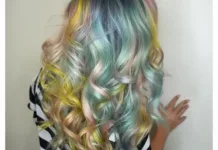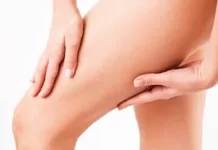The scalp is 600 to 800 cm2 of skin that covers the skull, on which up to 200,000 hairs are implanted. It contains many hair follicles and multiple sebaceous glands, which ensure sebum production to lubricate the hair and sweat glands that secrete

perspiration. And it is home to a microbiota made up of yeasts and bacteria, some of which ensure the synthesis of vitamins and nutrients necessary for hair growth. A miracle of physiological sophistication… as long as the balance is preserved.
Prevent it from getting greasy
Less than 24 hours after shampooing, the roots are already oily? It may be the nature of your scalp, but if the phenomenon worsens, another cause must be sought. The functioning of the sebaceous glands may be disturbed under the effect of stress, hormonal imbalance, improper use of hair products, excessive use of the hairdryer… As a result, hyper-seborrhoea develops. Develops by the reaction. It is time to act, and not just for aesthetic reasons. The goal is to allow the roots and the skin to breathe.
- The solutions: logically, we limit the hairdryer, especially in the hot position. We also opt for a special shampoo for oily hair, often based on purifying nettle, rosemary, thyme, or purifying zinc, and clay with absorbent power. We try to space out the shampoos to help the scalp regulate itself from time to time. And when you make a mask to nourish the ends, you avoid the roots at all costs.
Hydrate it well
Once the presence of any parasites – in other words, lice! – spread aside, we try to understand what itches the head here and there, behind the ears, at the level of the nape of the neck, the edge of the forehead. In the absence of root plaques, simple skin dryness may cause. It can also be caused by a hormonal imbalance, improper care, pollution, poor hydration when you don’t drink enough water every day, a diet that is too low in plants…
- The solutions: we track down all the aggravating factors by putting aside drying products (based on alcohol, sulfate, silicone, or too loaded with surfactants), and we make sure to hydrate well. The repeated use of mild, moisturizing, and nourishing shampoos with a neutral PH should also bring a lot of comforts. We target milk, sweet almond oil, shea butter, wheat germ oil, and aloe vera…
Calm a burn
Is the scalp inflamed? Using the hairdryer hot too close to the roots could have burned the skin. But it can also be an allergy manifested by redness, even edema, in the event of sensitivity to an allergen contained in hair care. Certain ingredients found in dyes and smoothing products, preservatives, and perfumes generate this kind of reaction. Some allergens to spot: Cocamidopropyl betaine, methylisothiazolinone in shampoos, paraphenylenediamine (PPD) in tinctures.
- The solution: rinse hair and reactive scalp immediately and thoroughly. It is essential to avoid using the products supposedly responsible for the symptoms and consult the attending physician without delay—ideally, an allergist who can perform a test and confirm the allergy.
Prevent dandruff
These small, whitish particles are usually a clump of dead cells resulting from runaway skin cell renewal, often as part of a mild inflammatory condition called seborrheic dermatitis. It is mainly caused by the overgrowth of yeast (Malassezia). It is pretty standard, unsightly but benign.
- The solution: Conventional anti-dandruff shampoos usually restore balance and make dandruff disappear, at least temporarily. If necessary, the dermatologist offers more powerful antifungal treatments based on ketoconazole or ciclopirox olamine, for example.
In the case of psoriasis
Large oily films that adhere to the roots, tingle, and sometimes itch suggest psoriasis that can develop on the scalp, and sometimes even only there. It is a chronic inflammation of the skin manifested by erythematous-scaly lesions, the origin of which could be genetic. Cell renewal takes place at a rate that is too fast to ensure the regular elimination of dead cells that accumulate and promote dander and reddish patches. Five solutions for a healthy scalp




























